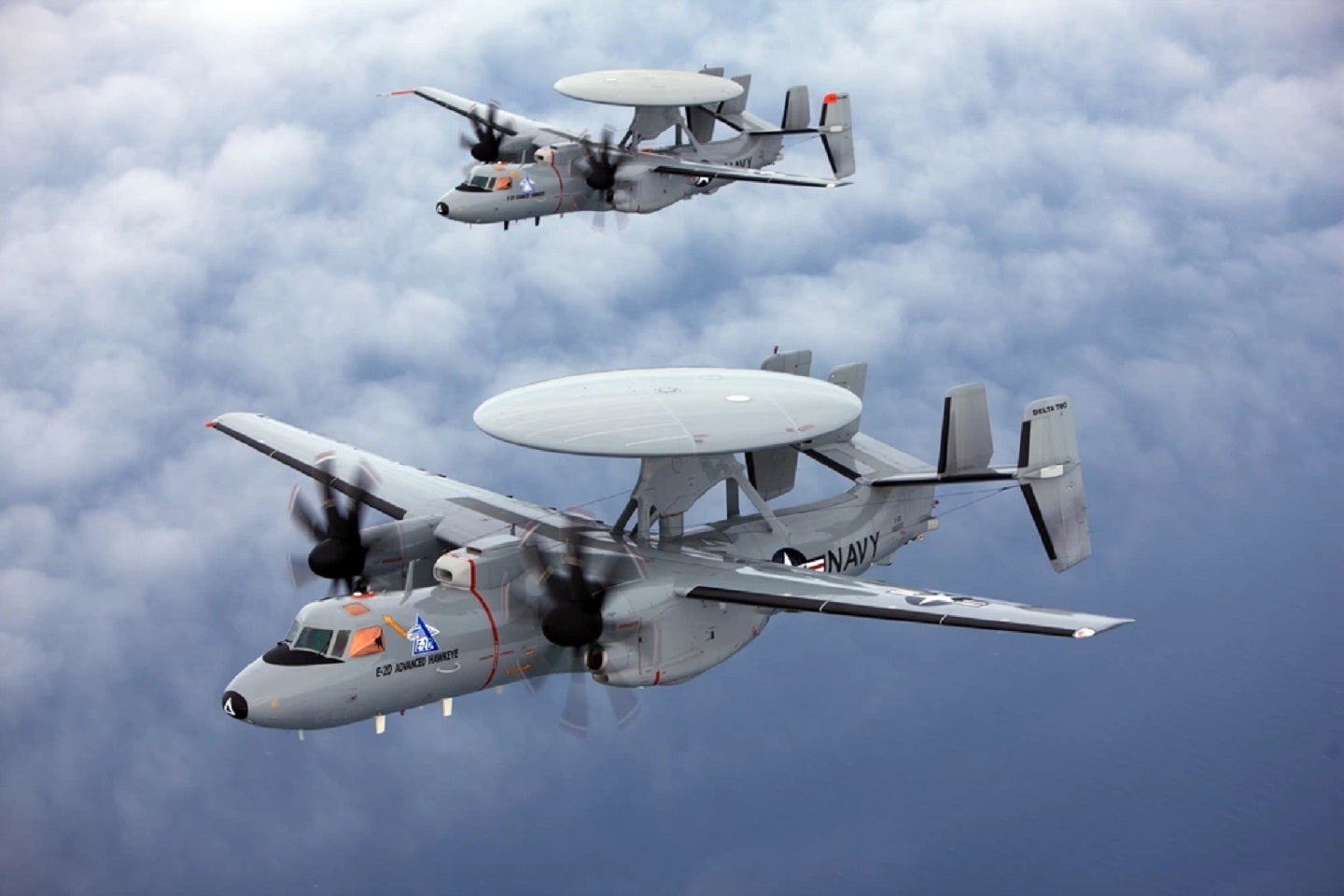
E-2C and D variants in fleets around the world are due to receive sustainment and technical services, ensuring the best use of the aircraft’s ISR capabilities at sea.
Northrop Grumman has received a modification to an enduring contract valued at $25m to provide the US Navy (USN) and the governments of France, Japan, Taiwan, and Egypt with sustainment and technical support for their E-2C/D Hawkeye reconnaissance aircraft.
Work will be performed in Melbourne, Florida (59.9%); Misawa, Japan (22.6%); Dayton, Ohio (4.4%); St. Augustine, Florida (4.3%); and various locations within the continental US (8.8%), and is expected to be completed in April 2026. Foreign Military Sales customer funds are valued at $14.3m, which will be obligated at the time of award.
As well as the USN, the E-2C aircraft is in service with the navies of Egypt, France, Israel, Japan, Singapore and Taiwan. Three ex-Israeli Air Force E-2C aircraft were sold to the Mexican Navy, with the first two delivered in June 2004 and the third in November later that year.
Deliveries totalled more than 180 for the USN and over 30 for other nations. Six E-2C Hawkeye aircraft are deployed by the US Naval Reserve for drug interdiction and homeland security operations.
The fuselage is designed for carrier operations. For storage in the hangar, the wings fold hydraulically to lie flat in the fuselage. The fuselage is made of light metal and parts of the tailplane are of a composite structure to reduce radar signature.
The next-generation E-2D Advanced Hawkeye has a new radar system, theatre missile defence capabilities, multi-sensor integration and a Northrop Grumman navigation systems tactical glass cockpit.
A standard ISR platform?
Leading intelligence firm GlobalData forecasts global spending on the later E-2D variant to be quite volatile, registering a compound annual growth rate of -27.68% between 2023 and 2033. Between 2028 and 2032, GlobalData expects there to be a sharp decline from $1bn to $33m. This could be explained by the current developments in the area of ISR capabilities supporting navies.
One notable programme, the E-XX aircraft, is being developed to provide secure connectivity between the US National Command Authority and the USN’s ballistic submarine fleet that can deliver nuclear weapons.
Meanwhile, the E-2C became operational in 1973. Featuring an improved engine and radar, the Block II aircraft entered service in 1992 and final delivery took place in 2001. As it stands, it appears a modernisation is needed, which goes some way to explaining the faltering spending forecast on the latest E-2D aircraft.
Leave a comment